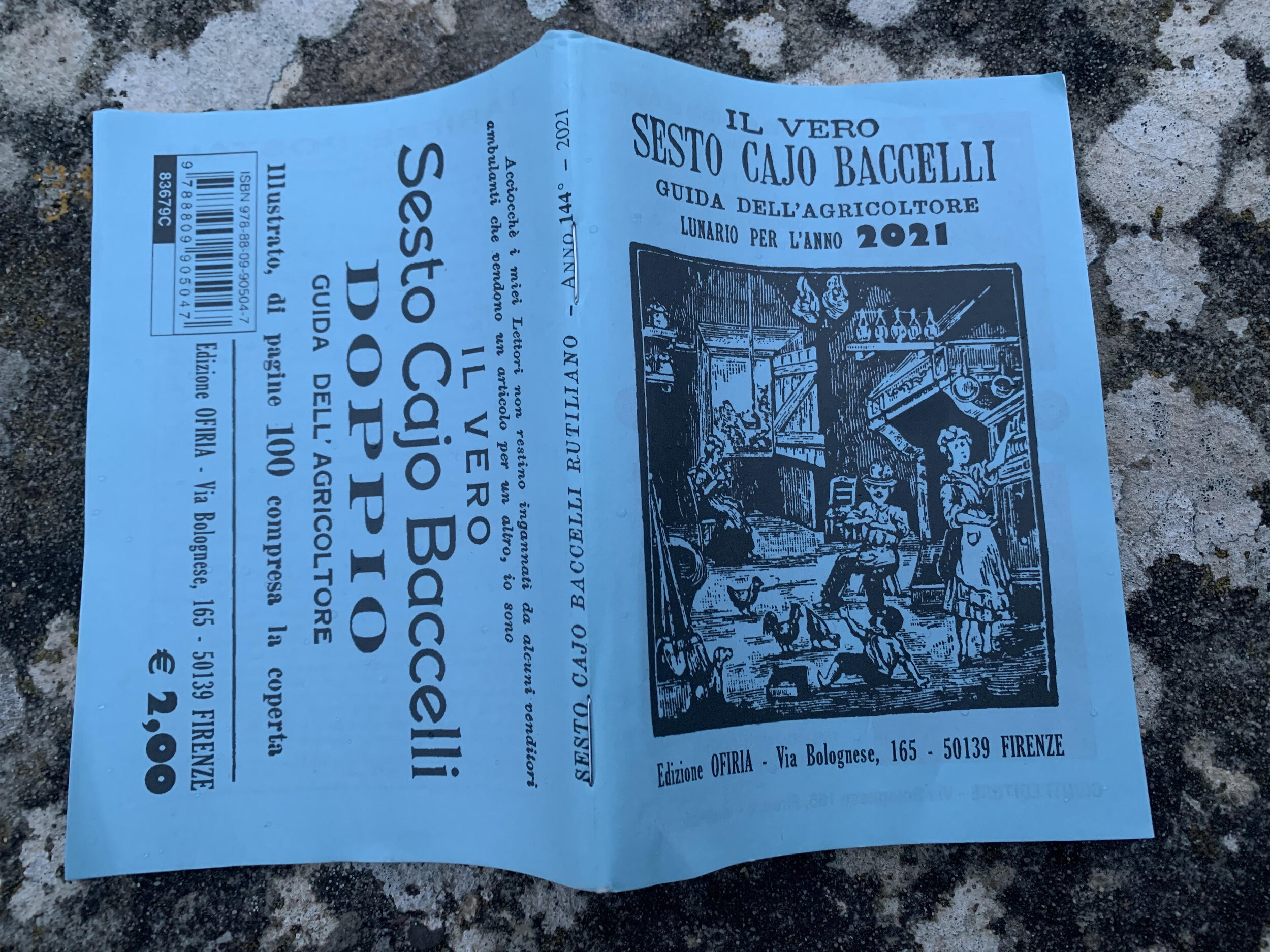Il Vero Sesto Cajo Baccelli… best buy ever!
Consulting the phases of the moon is a practice that, independently of Rudolph Steiner, has been integral to farming since humans began to grow their own food. Here at Il Palazzone, although we are not a biodynamic winery, the lunar calendar influences bottling dates, determines frequency of pump-overs and when we plan certain vineyard operations. The lunar calendar is also used for planning wine tastings and opening bottles. In 2009 Tesco and Marks & Spencer, UK retailers that at the time sold a third of wines consumed in Britain, only invited critics to taste when the biodynamic calendar suggested wines would show best. Now of course there is an app for this…. Here in Italy people consult the moon before cutting fingernails or hair. Just like pruning trees, whether the moon is waxing or waning will change the velocity of re-growth.
An essential instrument for all this comes out once a year, small enough to fit into a back-pocket. Il Vero Sesto Cajo Baccelli; a pastel blue booklet that, as specified on the back page, contains 100 pages including the cover. This almanac has been published for the last 144 years in Florence and is sold all over Italy.
Sesto Caio (or Cajo) Baccelli, known as Lo Strolago di Brozzi was a 17th century cabalist and astrologer. He was from Florence and related to the famous astrologer Rutilio Benincasa (1555-1626). Sesto means sixth and the frontispiece specifies that he was Settimo’s (Seventh’s) elder brother. Sesto was famous for publishing a lunar almanac for farmers, which was resuscitated in 1878 and has been coming out every year in October since then.
It starts with a doggerel poem about the events of the previous year, usually centred around Florence though touching on Italian and world events. These sestine were read at Sunday lunch tables and can be bought in collector’s sets of 50 years at a time. This year’s verses are dominated by Covid; the difficulties of observing lockdown rules, singing from balconies, increased time at the stove “tempo sui fornelli,” and an encouraging reminder that, as with both the plague and the Spanish flu, the world will recover. Sesto has a quick dig at wall-builders before finishing with some lucky numbers to play on the lottery (30, 2, 16, 9, 38).
A list of religious festivals including the feste mobili is followed by the specifics of the four eclipses of 2021, two solar and two lunar. Only one of these will be visible from Tuscany (the world’s epicenter, clearly) and each city’s time is specified (6 minutes difference between Arezzo and Florence). Month by month there is a lunar calendar peppered with mottoes and detailed farming instructions. The instructions are in sections; fruit trees, olive groves, vineyards, cantina, livestock and vegetable garden (orto). Last of all is the giardino since flowers are a farmers’ last priority.
All Saint’s days are shown, along with sunset and sunrise times, weather predictions for the whole year, historical titbits and lucky numbers per month. It will be stuffy (afa) on 26th June, the feast day of butlers and chambermaids. Lawyers should be celebrated on 30th May. Spring starts on 20th March at 10.37. There is a horoscope for the year, articles and poems, two page of jokes, mathematical problems with a €60 prize and a comprehensive list of all sagre, festivals and markets in Tuscany, province by province. Last, but not least, all postal rates for 2021.
You will never spend a better €2.


